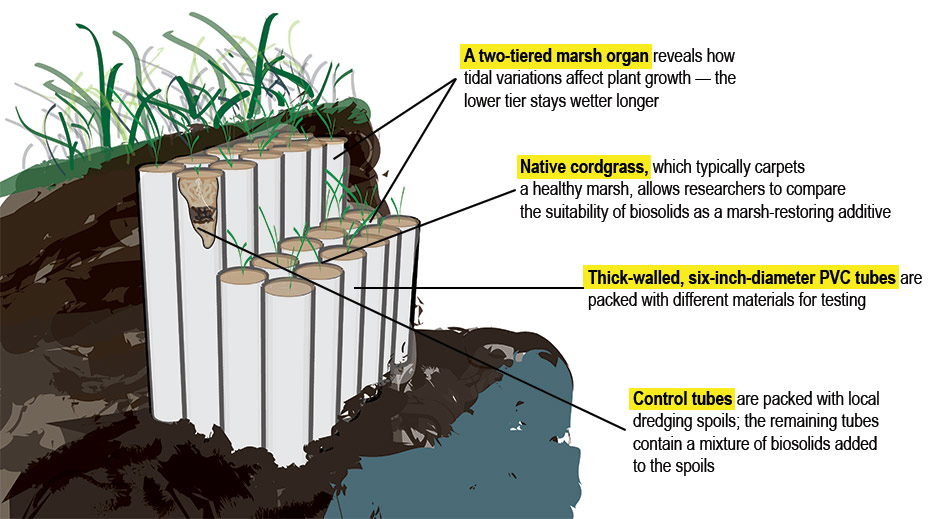
Restoring tidal marshlands
 Illustration courtesy Madeline Foster-MartinezA decade after Hurricane Katrina devastated New Orleans, Madeline Foster-Martinez, a civil and environmental engineering doctoral student and Louisiana native, is investigating how to use biosolids to make tidal wetlands less vulnerable to storm surges. Dredging spoils are currently used to shore up marshes, but they are largely sand. Biosolids — treated sewage sludge from wastewater treatment plants — could add necessary nutrients to strengthen marshlands and better protect coastal regions.
Illustration courtesy Madeline Foster-MartinezA decade after Hurricane Katrina devastated New Orleans, Madeline Foster-Martinez, a civil and environmental engineering doctoral student and Louisiana native, is investigating how to use biosolids to make tidal wetlands less vulnerable to storm surges. Dredging spoils are currently used to shore up marshes, but they are largely sand. Biosolids — treated sewage sludge from wastewater treatment plants — could add necessary nutrients to strengthen marshlands and better protect coastal regions.
“Marshes are just incredible — not only do they clean out pollutants, but they also sequester carbon, attenuate storm surge and provide habitat and food,” she says. “They do it all.”
Read more: Building an organ in the marsh

